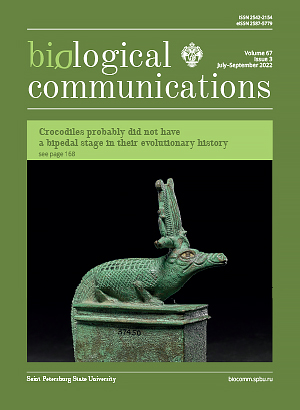Preferable and limiting conditions of trans-Palearctic Orthocephalus species (Heteroptera: Miridae)
DOI:
https://doi.org/10.21638/spbu03.2022.305Abstract
The environmental conditions limiting the distribution of trans-Palearctic species from various groups remain poorly studied. This work addresses the topic from three perspectives: (1) analysis of climatic variables, biomes and climate zones corresponding to the actual records; (2) assessment of environmental niches and contribution of biomes to those niches; (3) comparison of the distributional limits of trans-Palearctic and more local species. The genus Orthocephalus (Insecta: Heteroptera: Miridae) is used as a model taxon. The results have demonstrated that all trans-Palearctic species of this genus are known from numerous biomes and climate zones, but each of them has unique preferences. Biomes significantly contribute to the environmental niches of some of those species. None of the trans-Palearctic species were recorded from the hot steppe and desert climate zones, which occupy large areas in the Palearctic, although certain rare and local species inhabit those regions. This means that the trans-Palearctic species cannot easily adapt to those conditions.
Keywords:
distribution, climatic variables, climate zones, biomes, plant bugs, insects, environmental niche modelling
Downloads
References
Downloads
Additional Files
Published
How to Cite
License
Articles of Biological Communications are open access distributed under the terms of the License Agreement with Saint Petersburg State University, which permits to the authors unrestricted distribution and self-archiving free of charge.





